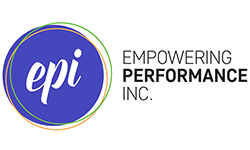11 Ways to Become an Insightful Listener
“Excuse me, but could you say that again?” We’ve all had the embarrassing moment of realizing we just zoned out completely while someone else was talking. Maybe we were too busy trying to listen to a side conversation going on nearby or we were distracted by an upcoming vacation. Or worse, we morphed into one of those annoying interviewers ꟷ so obsessed with their next planned question that they’re not really listening to the guest’s answer and thus miss the perfect opportunity for a killer follow-up.
According to research, only 10% of us listen effectively And people spend 60-80% of conversations talking about themselves ꟷ even if no one is listening! There’s no doubt we could all benefit from more insightful listening.
Being an insightful listener means not only actively engaging with the person on the other end of the conversation, but also listening for the subtleties.
You’re offering your full attention to someone as they overtly or covertly express their feelings and needs. You’re listening to the nuances of emotional variance in their voice, so you can accurately discern their emotions. And you’re listening in an empathetic manner, focused entirely on them instead of yourself. You’re taking in non-verbal signals as well, absorbing body language to read between the lines.
As an insightful listener, you're listening with respect and an open mind. With alignment as opposed to antagonism. This deepens understanding and helps overcome conflict.
Here are 11 techniques to boost your listening skills immediately.
Attend. Give the speaker your undivided attention and don’t succumb to distractions.
Go to the balcony. In Getting Past No, author William Ury suggests that, instead of reacting with knee-jerk emotions, you walk up the steps to your mental "balcony." View the scene from above and calmly evaluate it. Replace passion with dispassion.
Bracket. Acknowledge your biases, preconceptions, and judgments . . . then consciously set them aside.
Demonstrate. Show you’re listening by saying things like “Yes” or “I see,” and nod or smile at appropriate times.
Reflect. Confirm your understanding by reflecting (repeating) the speaker's words.
Defer. Don’t interrupt.
Paraphrase. Use your own words to confirm the speaker’s message.
Check perception. Confirm with the speaker that your assumptions are correct ꟷ not just the data you're receiving, but also how the speaker is feeling.
Use open-ended questions. Probe for more information by asking questions that require more than a one-word response. This shows you're curious and interested.
Check body language and tone. Be aware of the speaker's whole message, not just the words. Body language and tone can dramatically shift meaning. Also, stay aware of your own body language and tone: are you welcoming or closed-off?
Steer your perspective toward opportunity. When conflict arises due to tension or differing viewpoints, look for potential opportunities by asking yourself, “What’s possible here?” or “How can this improve the situation or relationship?”
In short, follow the Golden Rule. Treat the speaker the way you want to be treated when you’re expressing yourself.
Becoming a more insightful listener takes practice, deliberation, and patience. But it’s worth it. When you listen with insight, you’ll find it improves every relationship, whether you’re trying to secure a new client or wrangle your teenager.

